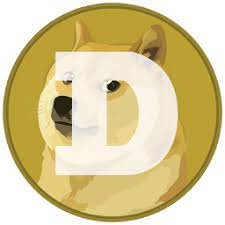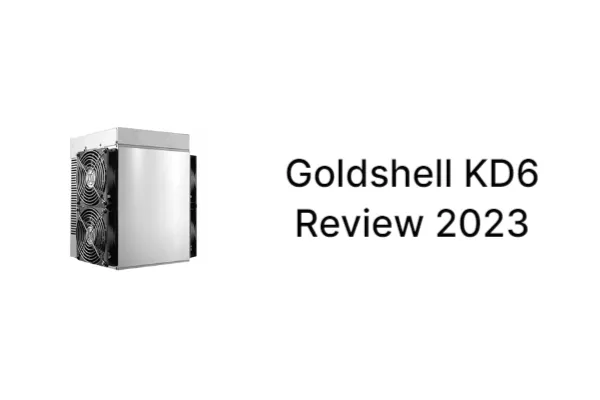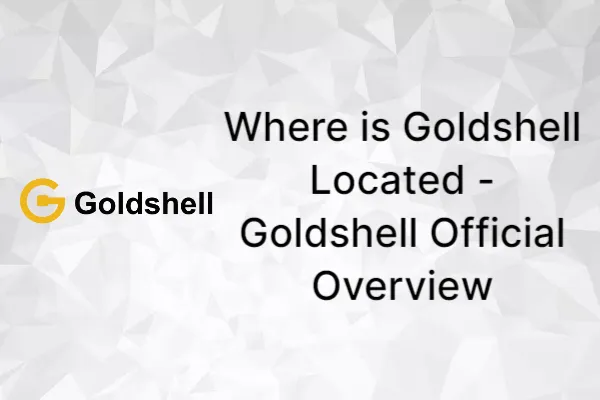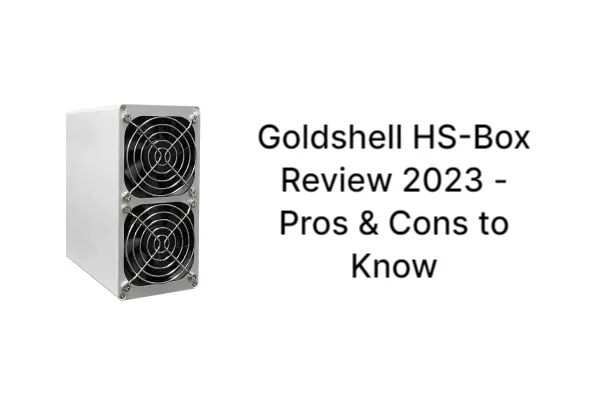We will list the coins that the Goldshell LT5 can mine for as well as the specifics of the most popular coins in this article.
The Goldshell LT5 is a Dogecoin and Litecoin merge miner (it can mine both coins at the same time). It mines the Scrypt algorithm, with a maximum hashrate of 2.05 Gh/s and a power consumption of 2080 W.
Examine the coins that the Goldshell LT5 can extract in more detail.
The prices of all cryptocurrencies mentioned in the article are indicated as of Feb 2nd, 2023.
Table of Contents
Popular Coins That You Can Mime With Goldshell LT5
Model LT5 from Goldshell mining Scrypt algorithm with a maximum hashrate of 2.05Gh/s for a power consumption of 2080W. Both Litecoin and Dogecoin can be mined simultaneously.
It is also capable of mining other cryptocurrencies using the Scrypt algorithm, including Gulden, GameCredits, Emerald, Dogecoin, Verge, DigiByte, Einsteinium, Florincoin, Auroracoin, and others.
For respectable rewards, the Goldshell LT5 can mine the following coins.
Dogecoin (DOGE)

Price: $0.09444
Market cap: $12,528,635,939
Dogecoin (DOGE) is based on the popular “doge” This internet meme’s logo includes a Shiba Inu. Billy Markus from Portland, Oregon, and Jackson Palmer from Sydney, Australia created the open-source cryptocurrency, which forked from Litecoin in December 2013. Given that Dogecoin was based on a dog meme, its creators believed that it would be humorous and lighthearted, and appeal to people outside of the core Bitcoin audience. Elon Musk, the CEO of Tesla, frequently mentioned Dogecoin on social media.
How Do You Mine Dogecoin?
One way Dogecoin’s proof-of-work protocol differs from Bitcoin’s is through the use of Scrypt technology. Dogecoins can be mined in any number due to the altcoin’s one-minute block time and unlimited total supply. Dogecoin can be mined either on an individual basis or by joining a mining pool. On these operating systems, you can mine Doge using a GPU and Windows, Mac, or Linux. Dogecoin and Litecoin mining have been combined since 2014, allowing for simultaneous mining of both coins. Dogecoin can be mined with the help of the potent ASIC miner Goldshell LT5.
What Can Dogecoin Be Used For?
Dogecoin has primarily been used as a tipping system on Twitter and Reddit to encourage the creation or sharing of high-quality content. Dogecoin can be obtained from a Dogecoin faucet or earned by taking part in a community that accepts the digital money. A website known as a “Dogecoin faucet” will provide you with a small amount of free In order to start interacting in Dogecoin communities, you should first learn about Dogecoin.
Litecoin (LTC)

Price: $100.59
Market cap: $7,261,213,946
Litecoin (LTC) is a cryptocurrency that was developed to provide quick, safe, and affordable payments by utilizing the unique properties of blockchain technology.
See our comprehensive analysis of Litecoin to learn more about this venture.
The cryptocurrency was created using the Bitcoin (BTC) protocol, but it differs from Bitcoin (BTC) in a few ways, including the hard cap, the amount of time it takes for blocks to process transactions, and the hashing algorithm used. With a block time of only 2.5 minutes and extremely low transaction fees, Litecoin is well suited for use in point-of-sale payments as well as microtransactions.
On October 1, Litecoin became accessible through an open-source client on GitHub. 7, 2011, and the The Litecoin Network went live on October 2—five days later. 13, 2011. Since then, its adoption and usage by businesses have skyrocketed, and for the majority of its existence, it has consistently ranked among the top ten cryptocurrencies by market capitalization.
The cryptocurrency was created by Charlie Lee, a former Google employee, who intended Litecoin to be a “lite version of Bitcoin,” in that it features many of the same properties as Despite being lighter, Bitcoin.
DigiByte (DGB)

Price: $0.01115
Market cap: $178,272,309
DigiByte (DGB) is an open-source blockchain and asset creation platform. Development for this Bitcoin (BTC) fork began in October 2013, and the DGB token’s genesis block was mined in January 2014.
The cryptocurrency and public blockchain DigiByte are well-known. It was created to increase the Bitcoin blockchain’s capacity, transaction speed, and security.
DigiByte consists of three layers: a smart contract “App Store,” a public ledger and the core protocol featuring nodes communicating to relay transactions.
Verge (XVG)

Price: $0.003129
Market cap: $51,683,060
Aiming to outperform the original Bitcoin (BTC) blockchain by offering a quick, efficient, decentralized payments network, Verge is a cryptocurrency and blockchain that prioritizes privacy. It has additional privacy features as well, including the capacity to send payments to stealth addresses and integration of the Tor network into its wallet, vergePay.
The initiative takes pride in being open source, claims to be driven by the community, and is dependent on volunteers.
A fork of Peercoin (PPC) called DogeCoinDark saw its initial release in October 2014. In order to reach a wider audience and differentiate itself from Dogecoin (DOGE), with which it has no direct affiliation, it was rebranded as Verge in February 2016. The project is currently constructed using the Bitcoin source code.
Gulden(NLG)

Price: $0.002206
Market cap: $1.24 M
Gulden is a platform for digital assets that aims to provide Users registered with the Dutch National Bank (DNB) with a safe and secure trading environment. The Gulden blockchain network aims to be among the safest decentralized networks in the world with minimal energy consumption, according to its website. Additionally, Gulden claims to have a thriving community that makes sure that all user questions are promptly addressed.
According to its whitepaper, the platform aims to address issues like centralization, selfish mining, double-spend, and 51 percent attacks that are frequently encountered in blockchain networks. Selfish mining is the practice of a miner delaying the broadcast of a solved block in order to begin mining another one. The same is true of Gulden, which seeks to resolve problems like transaction capacity limitations and blockchain stalling brought on by an unexpected lack of miners or new blocks.
Gulden claims that a variety of techniques, such as alternative algorithms, Proof-of-Stake (PoS), hybrid consensus techniques, algorithms for difficulty adjustment, etc., were used to get around blockchain’s limitations., have failed. As a result, the platform aims to deploy an improvised Proof-of-Work (PoW2) consensus mechanism on the network. PoW2 was developed to prevent 5 percent attacks. The platform also intends to implement a 0-conf solution, a two-layer network that would permit instantaneous block confirmations when necessary.
NLG is the native cryptocurrency of the Gulden platform. The token is produced using a cutting-edge mining method in which miners are required to verify and validate each block that is produced with witnesses. Thus, the miner must share the block in order to prevent a loss. This, according to the network, guarantees that every miner abides by the rules.
GameCredits (Game)

Price: $0.01944
Market cap: $3,483,499
The ERC-20 cryptocurrency GAME Credits operates on the Ethereum network. This specific cryptocurrency is the first to concentrate solely on gaming and transform in-game purchases. The platform is currently making a decentralized metaverse game with a creator community. The term “metaverse” refers to a vast virtual environment with enormous social and financial potential, where the use of blockchain enables the exchange of virtual goods for money with actual market value. In order to deliver a multi-utility platform, the network also makes use of smart contracts and application programming interfaces (APIs).
In the past, gamers and the conventional gaming industry could trade game assets, claims the whitepaper. The main problem was that players could only trade these items until the game’s designers gave their approval. Players could not make use of these resources in the event that the project’s creators decided to end it. GAME Credits aims to solve this issue by leveraging the advantages of blockchain, cryptocurrencies, and non-fungible tokens (NFTs). With the goal of enhancing the GAME for both players and developers, this platform completely controls in-game resources through NFTs. Players can now exchange in-game items across the network using smart contracts and GAME Credits in the form of NFTs.
The asset consists of a collection of gaming tools that make use of blockchain technology. A few features include the GAME Foundry NFT creator tool, GAME Exchange, GAME Reward System, and GAME Tournament Organizer. The platform likewise aims to enable game developers to operate effectively without any prior knowledge of blockchain technology. Developers can create NFTs on GAME Foundry to receive commissions.
For the token, GAME serves as the ticker. The creation, trading, and transferring of digital in-game assets takes place using these tokens by GAME Credits users. Players and communities can use these tokens to take part in or organize GAME tournaments.
Emerald (EMD)

Price: $ 0.0036309
Market cap: $ 69,413.02
Emerald is a cryptocurrency wallet and payment infrastructure that is fault-tolerant, unstoppable, and decentralized with a non-custodial security focus.
Einsteinium (EMC2)

Price: $0.009569
Market cap: $2,027,744
Blockchain technology is used by the community-driven cryptocurrency Einsteinium (EMC2) to raise funds for academic research.
In order to accomplish this, a mining tax is used to generate a fund from which grants can be given to deserving applicants. The community will vote on which scientific project to fund, and mined blocks will be required to donate 2.5% of their value to the Einsteinium Foundation’s fund. The Einsteinium Foundation uses crowdfunding to promote a range of projects and causes. 16 million EMC2 coins have reportedly already been donated to science projects by the Foundation.
With a 50% block reduction and a 60 second block time, the EMC2 Scrypt coin uses the Kimoto gravity well to democratize mining. The EMC2 coin works with Windows, Android, and Mac wallets.
Florincoin (FLO)
Price: $0.002450
Market cap: $375,771
FLO, a cryptocurrency that can be mined using Scrypt, processes transactions quickly. Florincoin has added a brand-new feature called transaction comments. With the help of these transaction comments, Florincoin is able to support a wide range of cutting-edge blockchain improvements and applications.
Auroracoin (AUR)

Price: $0.02796
Market cap: $418,632
As a peer-to-peer alternative to bitcoin and the Icelandic króna, peer-to-peer cryptocurrency Auroracoin (AUR) was launched on January 24, 2014. Under the pseudonym Baldur Friggjar Óðinsson, the unidentified creator or creators premined half of the 21 million total coins for the 330,000 Icelandic citizens who live in Iceland.
Phase I Phase I of this ground-breaking national ID-based airdrop with 31.8 auroracoins per claimant received 31.8 auroracoins per claimant received 31.8 auroracoins per claimant received 31.8 auroracoins per claim In 2015, phases II and III came to an end, with 318 and 636 auroracoins per claimant, respectively.
40 percent of the 10.5 million premined coins were claimed, 10 percent were donated to the 50% of the M1 fund of the Auroracoin Foundation were undeniably destroyed. (AURburnAURburnAURburnAURburn7eS4Rf)
2016 saw the implementation of a multi-algorithm (PoW) hard-fork. There was also a block-time change from 10 minutes to 61 seconds, a corresponding change in block-reward, resulting in a “halvening schedule” change and increase of maximum coins to 23.3 million. ( Adjusted to 17.97 million after 5.345 million burned )
In order to expand Auroracoin’s blockchain advocacy efforts in Iceland, it was decided to liquidate 80% of the M1 fund when the Icelandic Blockchain Foundation (Rafmyntaráð) was founded in 2018.
In 2021, Auroracoin made another significant major release, continued to be volunteer-driven, and made use of open-source technology with the goal of offering a substitute for fiat currencies that inflate.
What is Scrypt?
Scrypt was one of the first hashing algorithms used on blockchain networks. It aims to improve the SHA-256 hashing algorithm, which was previously employed.
Password-based Key Derivation Function
Scrypt is a key derivation function (KDF) that employs a password. KDFs are cryptographic hash functions that use a pseudorandom function to produce one or more secret keys from secret values like master keys, passwords, or passphrases. KDFs are generally good at thwarting brute force password guessing attacks.
FPGAs and ASICs could, however, only be partially avoided by KDFs like Password-Based Key Derivation Function 2 (PBKDF2) prior to the invention of Scrypt. Although not memory-intensive, PBKDF2 and other password-based KDFs required a lot of computation. Scrypt was designed to use a lot of memory and be computationally expensive.
ASIC Resistance
Scrypt was developed as a response to the proliferation and dominance of ASIC mining equipment and the subsequent centralization of cryptocurrency mining. The Bitcoin network and other Proof of Work networks that support virtual currencies use SHA-256, a blockchain-related upgrade known as Scrypt.
Due to Scrypt’s design, miners must generate random numbers quickly. The processor’s Random Access Memory (RAM), which must be continuously accessed before submitting a result, must be used to store these figures. Scrypt networks frequently have much lower hash rates than SHA-256 networks. For instance, as of the writing, the hash rate for Litecoin (LTC) is approximately 138 TH/s. Bitcoin is hashed using an estimated 93,000,000 TH/s.
Origins of Scrypt
Using specialized hardware, Scrypt was developed as an algorithm to strengthen network security. Scrypt was originally developed for another use case and later implemented on blockchain networks, in contrast to other hashing algorithms like Equihash and CryptoNight, which were created specifically for Proof of Work blockchains.
Prominent Projects That Use Scrypt Algorithm
Litecoin (LTC), Dogecoin (DOGE), and Einsteinium (EMC2) are three popular Scrypt-based projects. This section will look at how each of these networks uses Scrypt and how effective it is at maintaining network security. We’ll also look at a few applications that once used Scrypt but have since switched to different hashing algorithms.
Advantages and Applications of Scrypt
- less complicated than other mining algorithms.
- significantly less energy is used than with other algorithms like SHA-256.
- Scrypt coins generally require lower fees for transactions on their blockchains
- Bitcoin mining is four times faster with Scrypt.
- Fantastic method for encrypting files, wallets, and passwords.
Summary
The Goldshell LT5’s design differs from that of earlier Goldshell Litecoin miners as well. Large-scale mining is made possible by the miner’s modern, sleek design. There are several coins that can be mined, with Litecoin being the most profitable. Gulden, GameCredits, Emerald, Dogecoin, Verge, DigiByte, Einsteinium, Florincoin, Auroracoin, and other digital currencies are among those that can be mined.
FAQs
How Profitable is the Goldshell LT5?
Dogecoin is mined by the Goldshell LT5. At the current DOGE price of $0.09, the Goldshell LT5 is mining $7.43 a day before power cost is subtracted.
At an electricity cost of $0.08 per kwH, the daily profit of this miner would be $3.44.
How Much Dogecoin Does the Goldshell LT5 Mine Per Day?
The LT5 currently mines 55.54 DOGE a day.




